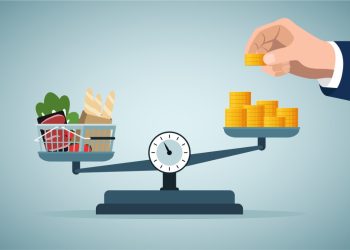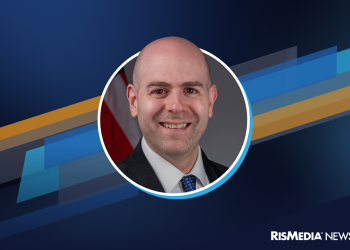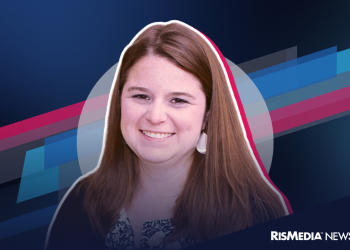 RISMEDIA, April 15, 2011—(MCT)—Homes are more affordable these days, the selection is abundant, and interest rates are still fairly low. For some people, it could well be a great time to buy.
RISMEDIA, April 15, 2011—(MCT)—Homes are more affordable these days, the selection is abundant, and interest rates are still fairly low. For some people, it could well be a great time to buy.
But as too many struggling borrowers now realize, the cost of owning a home is hardly limited to paying the mortgage. There are a host of other checkbook-sapping details—both recognizable and unexpected—that can get overlooked in the excitement of buying a house, especially if it’s your first.
Ultimately, those things might mean the difference between home sweet home and foreclosure.
“It is extremely important to explain to all buyers, but especially first-time buyers, that there are additional expenses other than their monthly mortgage payment,” said Philadelphia-area real estate agent John Duffy.
Just because a lender has qualified you for a certain size mortgage doesn’t mean you have to spend that much on a house, Duffy said his agents caution buyers. “There will be additional, unforeseen costs, such as repairs, decorating, improvements, utilities and the like,” Duffy said. “We like to tell them that we want them to enjoy their new home and not be house-poor.”
Through the loan-qualifying process, some buyers, especially first-timers, become aware of the concept of spending only a certain percentage of their income on what is called PITI—principal, interest, taxes and insurance—”maybe 33 percent of income,” said Jerome Scarpello of Leo Mortgage in Ambler, P.A. The reason that percentage isn’t higher is that other expenses will be incurred with homeownership, he said.
“Of course, there are some folks who really need to be taught this,” Scarpello said, recounting a story he heard of borrowers who brought their electric bill to the bank when paying their mortgage. “They were surprised to learn,” he said, “the mortgage did not include electric, as their rental payment had.”
The “T” in PITI—taxes—can be extraordinarily expensive, depending on where you live. If you buy into a condo complex or a new-home development, you will have to factor in monthly homeowners association fees, as well. PITI and association fees are fixed costs, for the most part, although homeowners insurance rates and taxes can rise. Mortgage interest can change, too, if you don’t have a fixed-rate loan.
“I generally estimate high,” said Jeff Block of Prudential Fox & Roach in Philadelphia, “because I feel it is really important for buyers to have a conservative estimate and a detailed understanding of what their costs will be.”
Bruce Hahn, president of the grass-roots American Homeowners Association in Arlington, V.A., said home listings typically include historic costs for utilities, condo fees and taxes, “so it should not be hard for buyers to anticipate how much extra cash flow they’ll need to cover them.” If that information isn’t provided, Hahn said, buyers should use all other possible means to determine or estimate them in advance. He urged buyers to set aside a “rainy-day fund” for unanticipated major expenses, such as a broken heat pump or air conditioner or a roof leak. “Homeowners’ insurance plans often have lots of gaps, so there are many things they don’t cover.”
For example, Hahn said, he was glad his homeowners’ insurance included flood coverage “when our basement stairwell drain was clogged with leaves and water backed up in our basement.” However, “our insurance agent explained that flooding is what happens when the river rises, but what we had was ‘seepage,'” which the homeowners policy did not cover.
As Hahn cautioned, you need to be intimately familiar with deductibles as well as coverage limits, so your annual premium will likely be much higher than the state average when you finish crafting your policy.
You certainly can shop around for the best rates, and, in many cases, save money on the premium with a policy that covers your automobiles as well as your house.
But you should also allow for simultaneous unanticipated expenses, such as a car transmission failure and a fridge on the fritz. If you are living on the economic edge, enough of these disasters can push you over it.
“We believe that $10,000 in liquid savings (a money-market account or the like) that can be turned into cash anytime with very little risk of capital loss is not too much,” Hahn said, adding that $5,000 was the recommended minimum. Hahn’s group doesn’t advise using credit cards to meet emergency expenses, because their interest rates are high compared to what savings accounts pay today. “It is better,” he said, “to liquidate a savings account that is only paying 1 percent to pay for emergency costs than put them on a credit card and pay 15 percent.”
Among expenses to factor into a home-buying decision:
-Utilities: Heat, electricity, water and sewer, telephone, cable television, Internet and cell phones. You also may have to pay a fee for trash collection and recycling.
-Food/entertainment: Dining in and out, movies, hobbies.
-Children: Day care, tuition, lunch money, supplies, clothing, sports gear.
-Health costs: Braces, eyeglasses, medicine.
-Debt: Credit-card payments, car/student loans.
-Maintenance/repairs/decor: Furnishings and appliances, landscaping, snow removal.
-Job expenses: Transportation (gasoline or transit costs), auto maintenance.
(c) 2011, The Philadelphia Inquirer.
Distributed by McClatchy-Tribune Information Services.










